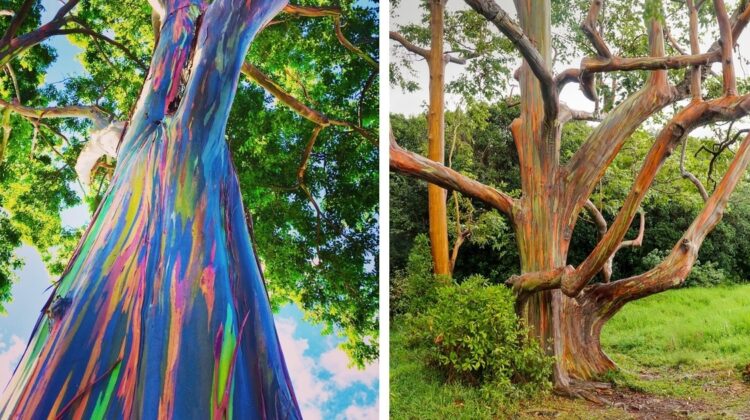Every Wednesday, One Earth’s “Species of the Week” series shines a focus on a relatively uncommon and outstanding species in order to highlight the beauty, diversity, and exceptional features of our common planet Earth.

Imagine walking through a forest and coming across beautifully colored Eucalyptus trees that are so easily recognized by their strong aroma that you would mistake them for an original piece of art.


As the bark sheds, the rainbow eucalyptus (Eucalyptus degluptavibrant )’s green inner layer may be seen. When this layer ages and is exposed to air, vibrant reds, oranges, blues, pinks, and purples are some of the hues that evolve through time. Other colors appear as different layers are peeled back, and exposed areas start to age. The result of this process is an astonishing picture that resembles a multicolored crayon scratch drawing that has been covered in black crayon and then the black crayon has been scraped off to reveal the multicolored crayon underneath.



The rainbow type of eucalyptus is the only one that is indigenous to the northern hemisphere. The Philippines, New Guinea, and Indonesia are where you can find the only eucalyptus tree that can grow in a rain forest. Additionally, it thrives in heavily forested tropical areas. The tree can grow as tall as 250 feet (76 meters) in its natural environment. In the US, Hawaii, the farthest south of California, Texas, and Florida, where there are no frosts, are all places where you can find rainbow eucalyptus. But in the US mainland, the tree only grows to a height of 100 to 125 feet (30-38 m.).

Because the thin layers of bark from the rainbow eucalyptus, also known as Mindanao gum or rainbow gum, are a great source of pulpwood, the main ingredient in white paper, it has a high commercial value for a product that is essentially colorless. They are a dominating species in pulpwood plantations due to their rapid growth—up to three feet per year—and inherent resistance to pest and disease problems.
The tree has evergreen leaves that are a little wide and white blooms. An fragrant oil is produced by glands in the leaves. It does not produce as much oil as other eucalyptus species are noted for, while having a distinctive aroma. The beauty of this tree makes that alright, though.







